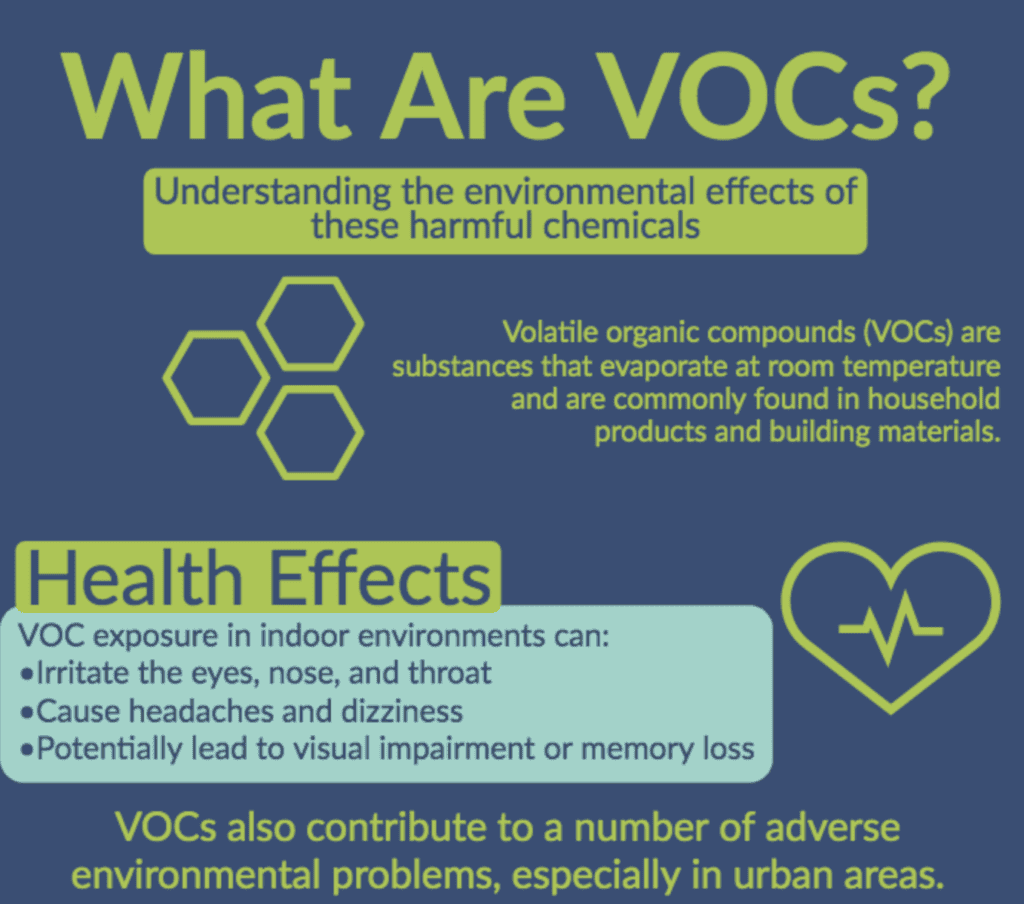April ushers in a season of renewal across the globe. In Japan, the cherry blossoms are blooming in a breath-taking display of renewal, while in the UK, the clocks spring forward, syncing with the longer, brighter days ahead. Social media feeds and magazine spreads are awash with vibrant spring colours. This vibrant shift inspires a flurry of spring-cleaning articles and social media content, all championing the rejuvenation of our living spaces. However, as we tackle the clutter accumulated over the past year, it’s crucial to dive deeper than the surface.

World Health Organization has identified indoor air pollution as a significant health risk, highlighting that the level of pollutants inside our homes can be up to 2 to 5 times higher than outdoor levels, sometimes soaring even higher. This startling fact reveals that the very air we breathe in our sanctuaries, our homes, might be more hazardous to our health than the bustling streets outside. (Photo Credit Above): World Economic Forum
The average Singaporean spends 95% of their time indoors so this is truly SCARY!
But it is empowering too. In a world brimming with uncertainties beyond our control, it is reassuring to know that changes we can make in our living spaces can make a difference to the health of ourselves and our loved ones
Armed with this knowledge, our spring-cleaning mission takes on a new urgency and purpose. It’s not just about creating space or refreshing our décor; it’s about safeguarding the health of our families, purifying the air we breathe, and transforming our homes into true havens of wellbeing. Let this spring be the time we clean with intention, removing not just the clutter, but the unseen dangers lurking in our indoor air.
Nikki’s Top Ten Tips to Detox Your Home
Creating a toxin-free environment in your home is not just a trend; it’s a lifestyle change that can significantly impact your health and well-being… Here are the top ten tips to help you detox your home, ensuring it’s a safe, healthy, and nurturing space for you and your family.
1. Go Green with Plants
Indoor plants do more than just beautify your space; they are natural air purifiers. Plants like the spider plant, snake plant, and peace lily can absorb toxins and produce oxygen, improving indoor air quality.

2. Embrace Natural Cleaning Products
Swap out chemical-laden cleaning products for natural alternatives. Vinegar, baking soda, and lemon are powerful, natural cleaning agents that can handle everything from disinfecting surfaces to removing stains, without the harmful toxins.

3. Ventilate Your Space
Ensure your home is well-ventilated to reduce indoor air pollutants. Regularly opening windows allows fresh air to circulate, flushing out potential toxins and reducing humidity levels, which can lead to mould growth.

4. Adopt a No-Shoes Policy
Shoes can bring in numerous pollutants from outside, including dirt, bacteria, and harmful chemicals. By adopting a no-shoes policy indoors, you can significantly reduce the introduction of these unwanted guests.

5. Choose Low-VOC Products
Volatile Organic Compounds (VOCs) are emitted gases from certain solids or liquids, including paints and lacquers. Opt for low-VOC or VOC-free paints and furniture to minimize your exposure to these harmful chemicals.

6. Filter your Water
Invest in a high-quality water filter to remove potential contaminants from your tap water. Whether it’s a whole-house system, under-the-sink, or a simple pitcher filter, ensuring your water is clean is a crucial step in detoxifying your home.
7. Reduce Plastic Use
Plastics, especially single-use ones, can leach chemicals into your food and environment. Use glass or stainless steel alternatives for storage, and opt for fresh, unpackaged produce whenever possible. Ikea have super affordable options. (Product photo from IKEA)

8. Prioritize Organic Bedding
Since we spend about a third of our lives sleeping, choosing organic bedding made from natural fibres can significantly reduce our exposure to pesticides and chemicals found in conventional fabrics.

9. Detox your Personal Care Routine
Personal care products can be a significant source of toxins. Look for natural or organic skincare and haircare products, and be wary of products with long ingredient lists full of unpronounceable chemicals and always look for fragrance free products. (Photo Credit: CCHO Scent-Free Zone)

10. Maintain Regular Dusting and Vacuuming
Household dust can contain a cocktail of toxic substances. Regular dusting with a damp cloth and vacuuming with a HEPA filter vacuum cleaner can help reduce the accumulation of dust and associated toxins.
Conclusion
Detoxifying your home is a journey, not a one-time effort. By incorporating these tips into your daily routine, you can create a healthier environment that supports your well-being and that of your loved ones. Start small, focus on one area at a time, and gradually make changes that fit your lifestyle. Remember, every step towards a toxin-free home is a step towards a healthier future.













